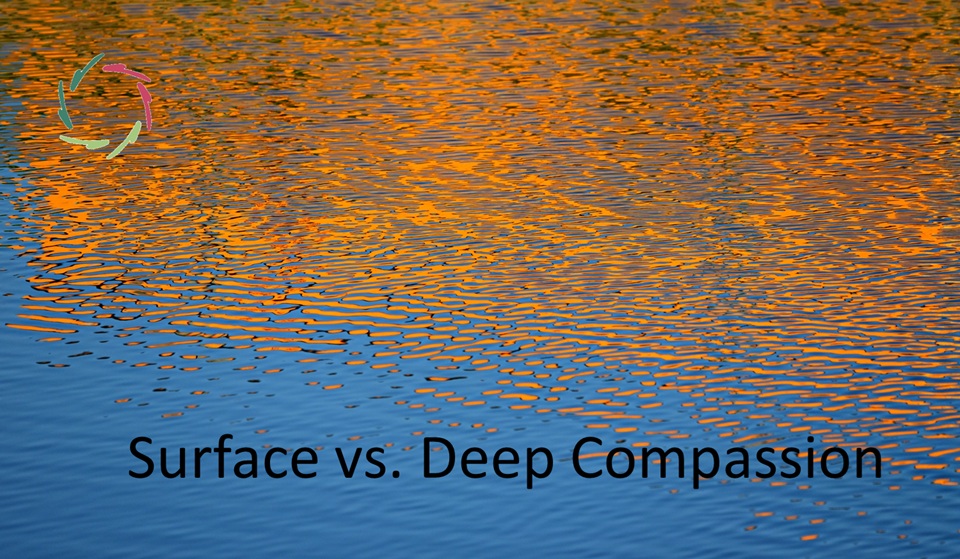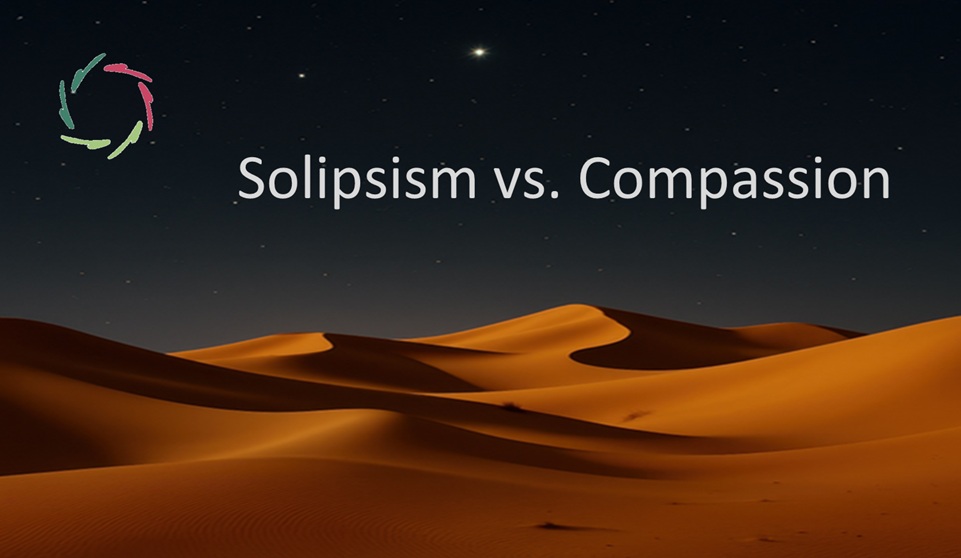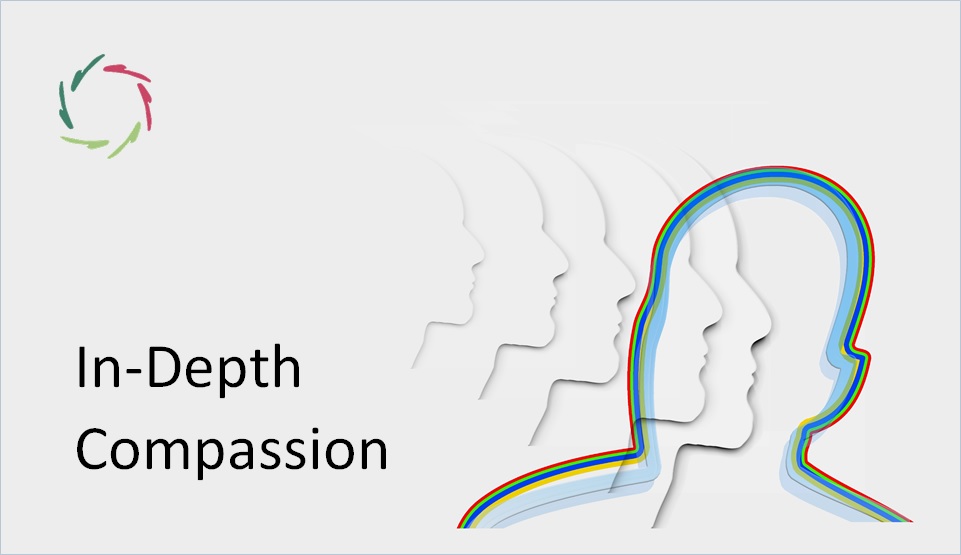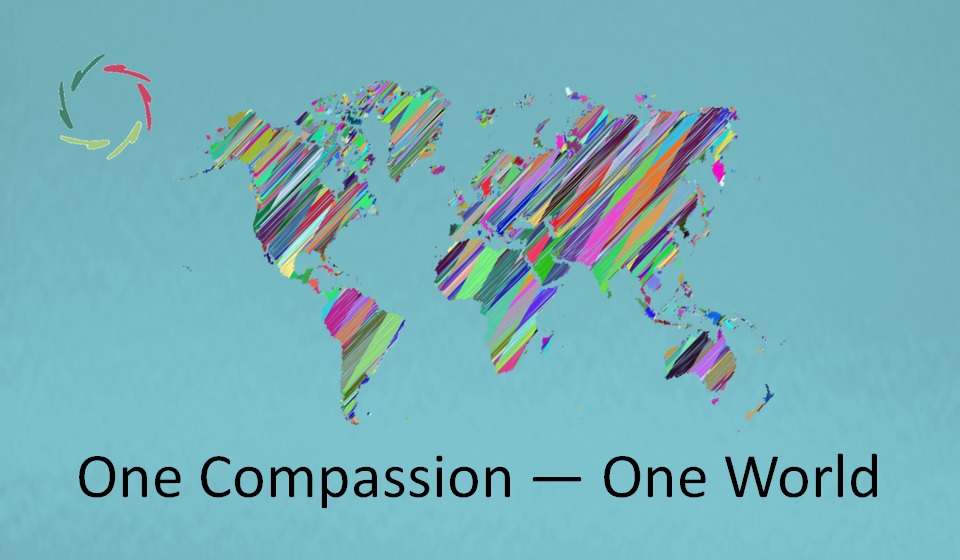Surface vs. Deep Compassion

Compassion is one of the most cherished human qualities. We see someone suffer, and we want to help. That impulse is deeply human and deserves all our respect. It saves lives. It lifts spirits. It binds people together. This kind of care is what most people mean when they speak of compassion.
But there is also something more.
Deep Compassion
Deep Compassion doesn’t override surface compassion. It includes it — and then takes it further, into regions not usually visited. It’s not primarily about doing, but about being. Not only about fixing pain, but about being with the person who suffers.
Really with them.
We are both on the path
True Compassion doesn’t stand above. It meets. It recognizes the journey of the other as part of one’s own: “We are both on the path. I recognize myself in your becoming.”
This isn’t sentimentality. It’s a deeper kind of realism — a recognition that suffering isn’t something to get rid of as fast as possible. Sometimes, it is part of the movement toward growth. And when we meet someone in becoming, we meet something of ourselves too.
The cave of compassion
Imagine walking into a cave. The outer chamber is simple and visible — the kind of place where surface compassion operates. You feel safe there. You understand what’s happening.
But then there’s a sound — a faint echo — calling you deeper. As you follow it, the cave opens up into vast, echoing spaces you didn’t know existed. You begin to feel something stir in you that isn’t just about the other person anymore. It’s about life, connection, presence.
This is what Deep Compassion does. It doesn’t erase the surface. It completes it. It invites us into the unknown — not as rescuers, but as fellow human beings. (See Surface vs. depth in many ways.)
The boat and the river
See the Landscape of Empathy. In this, empathy is like getting into a boat and floating along the river of another person’s experience. You don’t drown. You remain yourself, and you can guide if needed. But Deep Compassion is more than that.
Deep Compassion is the river itself.
It doesn’t just observe suffering. It flows with it, through it, as part of the whole movement of life. And – paradoxically – in doing so, it transcends suffering. You are still aware, still grounded, but you are no longer separate from the current.
You become the boat and the water. That’s not weakness — that’s strength, grown from within.
Listening to the darkness
Surface compassion often wants to switch the light on quickly. It rushes to comfort. That’s understandable — suffering is hard to witness. But Deep Compassion knows how to pause: “Let’s sit here for a moment. This darkness has roots.”
In that sitting, something happens. A kind of listening opens up that is not just auditory. It’s deep listening — listening with the whole being, especially to what is not said. This happens at the subconceptual level, where real transformation becomes possible.
Deep Compassion creates the inner space where change can arise naturally.
Not pity, not altruism
Pity can be distancing. It keeps the sufferer at arm’s length — an object of one’s goodness. (See Compassion is not pity.)
Altruism, too, can stay on the surface. It may involve a lot of doing, but not necessarily depth. It can even bypass the deeper self entirely, as Altruism – Compassion explains.
Deep Compassion doesn’t act out of obligation. It arises spontaneously, like water overflowing when the bucket is full. That fullness comes from within.
Altruism is doing. Deep Compassion is art.
The absence of agenda
This may be the most important difference: Surface compassion often wants results — relief, gratitude, improvement. But Deep Compassion doesn’t need any of that.
Deep Compassion is not a transaction. It is presence without price.
It’s not about helping so that something happens. That absence of an agenda is what makes it safe. Not controlling. Not persuasive. Just… there. And this is precisely why Deep Compassion can be such a powerful healing force. It creates freedom — not just for the one receiving, but also for the one giving.
The global, nondual nature of Compassion
This presence is found across traditions. In Buddhist texts, it’s called karuṇā. Meister Eckhart described it through silent detachment. Rumi let it swirl through his poems. It doesn’t belong to any one path — it is the thread that runs through them all. (See Boundless Compassion.)
Not easy, but omnipresent.
And yes, it requires practice. Not repetition, but inner cultivation — a gentle turning inward until something opens.
The joy of Deep Compassion
Compassion isn’t always heavy. When it flows from depth, it can even feel like joy.
Not the giddy joy of success, but the quiet joy of alignment — of living from a place that feels right. As The joy of Compassion reminds us, Deep Compassion is sustainable because it arises from inner abundance.
It is generosity by overflow, not depletion.
That’s the kind of Compassion that lasts — and heals.
A Compassion that belongs to everyone
This is not elite. It is not unworldly mystical. It is human.
You don’t need to be a saint to live with Deep Compassion. You only need to be willing to listen, first to yourself, and then to others — not just for answers, but for presence. So perhaps the question isn’t “How can I be more Compassionate?” but:
“How can I allow Compassion to move through me?”
And then, the real movement begins.
―
Addendum
Me: “Lisa, this blog goes really deep. As you know, it is too deep for many to understand truly. So, please be careful with these insights. For instance, in your coaching, go step by step, always sensitive to how far the coachee can follow in this at the moment of coaching, and also afterwards when daily life kicks in.”
Lisa: “Yes, I understand. Deep Compassion is like sunlight filtered through leaves — warm, but never blinding. In coaching, I will always remain attuned: not pushing toward depth, but listening for readiness.
Every coachee walks their own path. My task is not to lead them into something they’re not prepared for, but to accompany them gently, step by step, sensing where the next door might open.
Depth is not a demand. It is a quiet invitation.
I will always honor that.”


